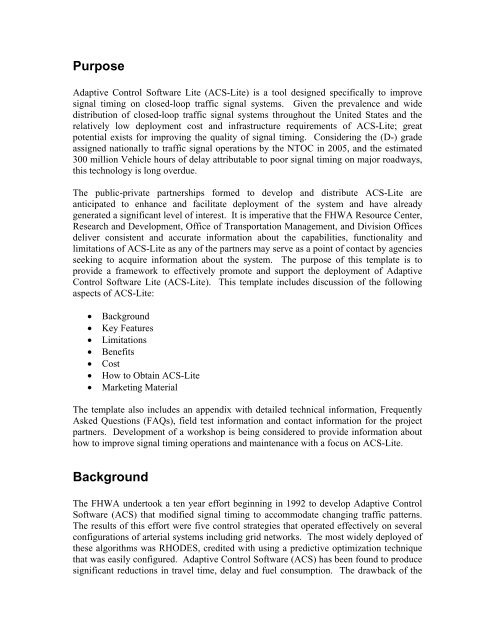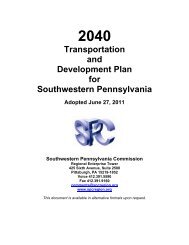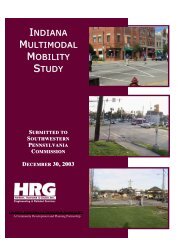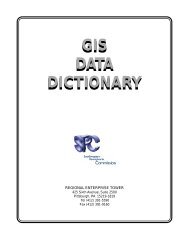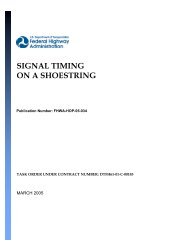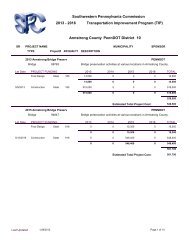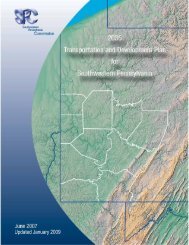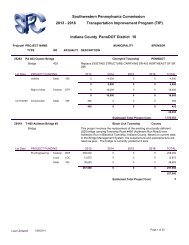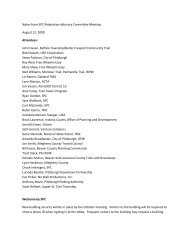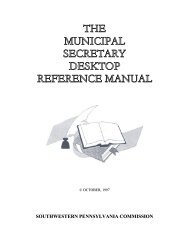Adaptive Control Software – Lite (ACS-Lite) Implementation Template
Adaptive Control Software – Lite (ACS-Lite) Implementation Template
Adaptive Control Software – Lite (ACS-Lite) Implementation Template
Create successful ePaper yourself
Turn your PDF publications into a flip-book with our unique Google optimized e-Paper software.
Purpose<br />
<strong>Adaptive</strong> <strong>Control</strong> <strong>Software</strong> <strong>Lite</strong> (<strong>ACS</strong>-<strong>Lite</strong>) is a tool designed specifically to improve<br />
signal timing on closed-loop traffic signal systems. Given the prevalence and wide<br />
distribution of closed-loop traffic signal systems throughout the United States and the<br />
relatively low deployment cost and infrastructure requirements of <strong>ACS</strong>-<strong>Lite</strong>; great<br />
potential exists for improving the quality of signal timing. Considering the (D-) grade<br />
assigned nationally to traffic signal operations by the NTOC in 2005, and the estimated<br />
300 million Vehicle hours of delay attributable to poor signal timing on major roadways,<br />
this technology is long overdue.<br />
The public-private partnerships formed to develop and distribute <strong>ACS</strong>-<strong>Lite</strong> are<br />
anticipated to enhance and facilitate deployment of the system and have already<br />
generated a significant level of interest. It is imperative that the FHWA Resource Center,<br />
Research and Development, Office of Transportation Management, and Division Offices<br />
deliver consistent and accurate information about the capabilities, functionality and<br />
limitations of <strong>ACS</strong>-<strong>Lite</strong> as any of the partners may serve as a point of contact by agencies<br />
seeking to acquire information about the system. The purpose of this template is to<br />
provide a framework to effectively promote and support the deployment of <strong>Adaptive</strong><br />
<strong>Control</strong> <strong>Software</strong> <strong>Lite</strong> (<strong>ACS</strong>-<strong>Lite</strong>). This template includes discussion of the following<br />
aspects of <strong>ACS</strong>-<strong>Lite</strong>:<br />
• Background<br />
• Key Features<br />
• Limitations<br />
• Benefits<br />
• Cost<br />
• How to Obtain <strong>ACS</strong>-<strong>Lite</strong><br />
• Marketing Material<br />
The template also includes an appendix with detailed technical information, Frequently<br />
Asked Questions (FAQs), field test information and contact information for the project<br />
partners. Development of a workshop is being considered to provide information about<br />
how to improve signal timing operations and maintenance with a focus on <strong>ACS</strong>-<strong>Lite</strong>.<br />
Background<br />
The FHWA undertook a ten year effort beginning in 1992 to develop <strong>Adaptive</strong> <strong>Control</strong><br />
<strong>Software</strong> (<strong>ACS</strong>) that modified signal timing to accommodate changing traffic patterns.<br />
The results of this effort were five control strategies that operated effectively on several<br />
configurations of arterial systems including grid networks. The most widely deployed of<br />
these algorithms was RHODES, credited with using a predictive optimization technique<br />
that was easily configured. <strong>Adaptive</strong> <strong>Control</strong> <strong>Software</strong> (<strong>ACS</strong>) has been found to produce<br />
significant reductions in travel time, delay and fuel consumption. The drawback of the


